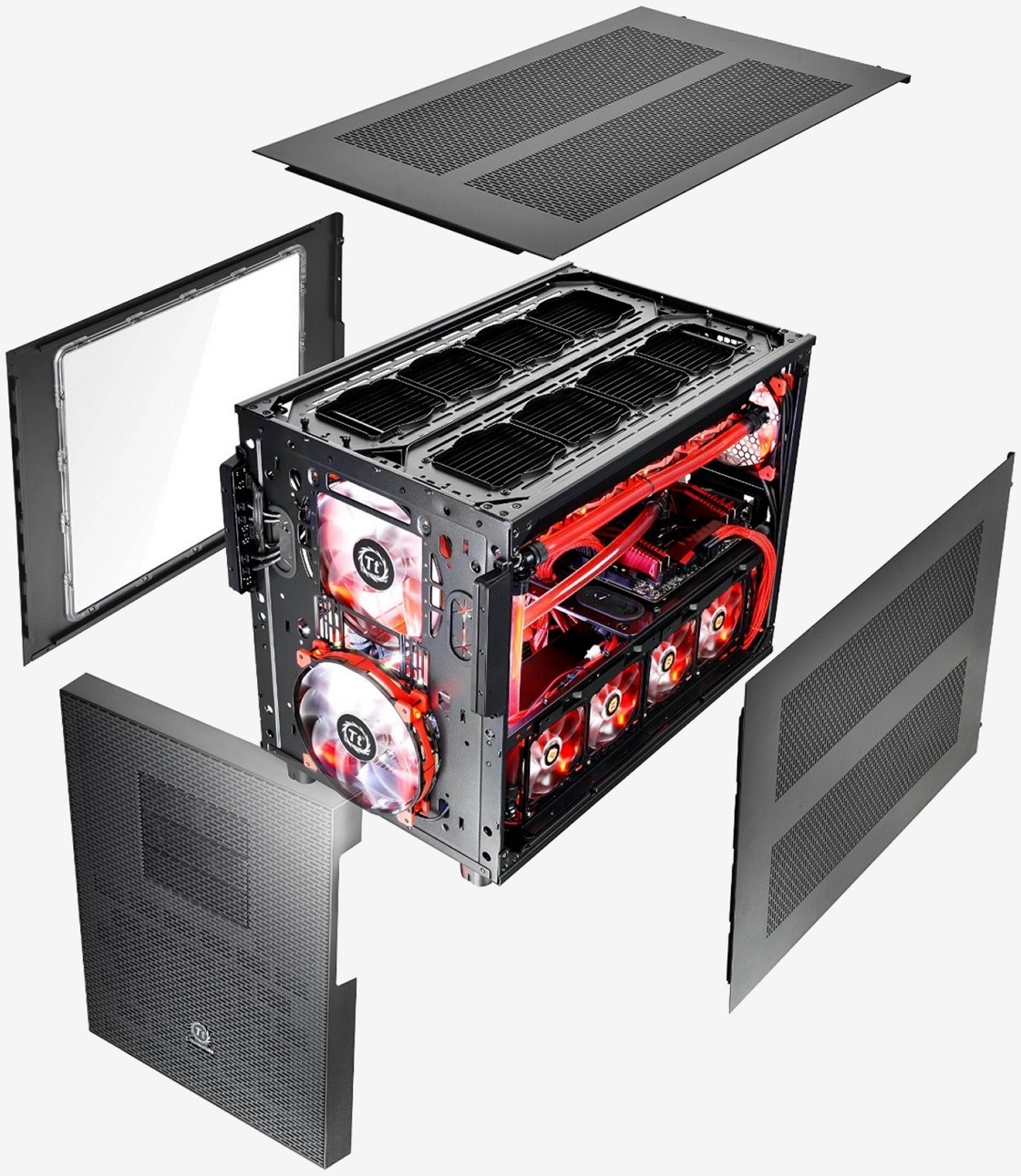Thermals & Conclusion
To ensure accurate thermal results, we installed the same hardware in each case in virtually the same way. Components included the Asrock Fatal1ty 990FX Professional, Phenom II X6 1100T, Prolimatech Megahalems in passive mode (i.e. no fan actively dispelling heat), Inno3D GeForce GTX 580 OC, half a dozen Western Digital Scorpio Blue 500GB hard drives, and OCZ's ZX 1000w power supply.

Big fans, extreme ventilation and no obstacles for airflow seems to be the key to the Core X9's excellent thermal performance. Under full load we reported our lowest CPU temperature yet, while the GPU also ran quite cool at 72 degrees.
These temperatures will no doubt be reduced further by adding a second 200mm intake fan at the front of the case.
Final Thoughts
Digital power supplies are all the rage now and the Thermaltake DPS G 750w is one of the more affordable options available at $140. For example, Corsair's HX750i costs a bit more at $150, though it's also 80 Plus Platinum certified whereas the DPS G range is Gold certified.
Aesthetically, we weren't overwhelmed by the DPS G 750w. Its curved edges look okay but aren't that practical as custom screws are required and the gold fan grill isn't that tasteful in our opinion.
Apart from the price we also liked the DPS G App2.0 Smart Software. It's pretty basic as you might expect for power supply software but it does provide plenty of interesting statistics. The fully modular design is also a nice touch and will make the DPS G suitable for compact systems that don't have room for cable clutter.
The Core X9 is a case modder's dream, affording endless opportunities for expansion and modification. If you're not interested in modding or building a crazy liquid-cooling setup then the Core X9's full potential will never be realized.
Saving space is not one of this enclosure's objectives and it makes no effort to hide the fact. With our standard test rig installed into the Core X9 there was enough empty space to fit a few compact gaming systems inside, cases and all.
If you can't envision and afford a labyrinth of cooling pipes, radiators and reservoirs, then the Core X9 will probably feel like it was built big for the sake of being big.
There are areas of the case that seem like they will be difficult to fill and this is where we think Thermaltake dropped the ball. Its modular system could have been so much more had the company provided a range of different parts to buy. It's a crime that you can only install a maximum of seven 3.5" drives in this case.
There's no reason Thermaltake couldn't have fit three times that amount of drives in the Core X9 and that's only in the smaller lower section of the case. Without additional storage options, we don't see this as an ideal file server, 122L capacity or not.
Performance-wise, the Core X9 was as good as any case we've tested and that's only with the two pre-installed fans. The enclosure has tons of ventilation and although it isn't a particularly loud case, you can hear fan noise quite easily, so keep that in mind if you plan to use all seventeen 120mm fan locations.
The Core X9's looks are the only other thing worth discussing. What we have here is a large rectangular steel box with a giant Perspex window in the side, plain and simple. Personally, I don't mind the bland design and there's arguably more going on here than with Lian Li's D8000, which is a case I really like.
Thermaltake's Core X9 is a serious amount of case for the money and it doesn't feel like it was built to a strict budget. The swappable side panels and I/O panel are a nice touch, the massive fan and radiator support is great, the tool-free drive bays work well and so do the magnetic dust filters.
Shopping shortcuts:
The only disappointment to me is the Core X9's modular design, which I feel is a missed opportunity that could have been amazing with a range of options for mounting more hardware in what is likely going to be wasted space in many setups.
score
Pros: The Core X9 touts a mammoth 122L capacity, a modular design, infinite cooling options and impressive thermal results out of the box for $170.
Cons: The modular system could have allowed for more variety, particularly storage. A chassis this size should support more than seven hard drives.

